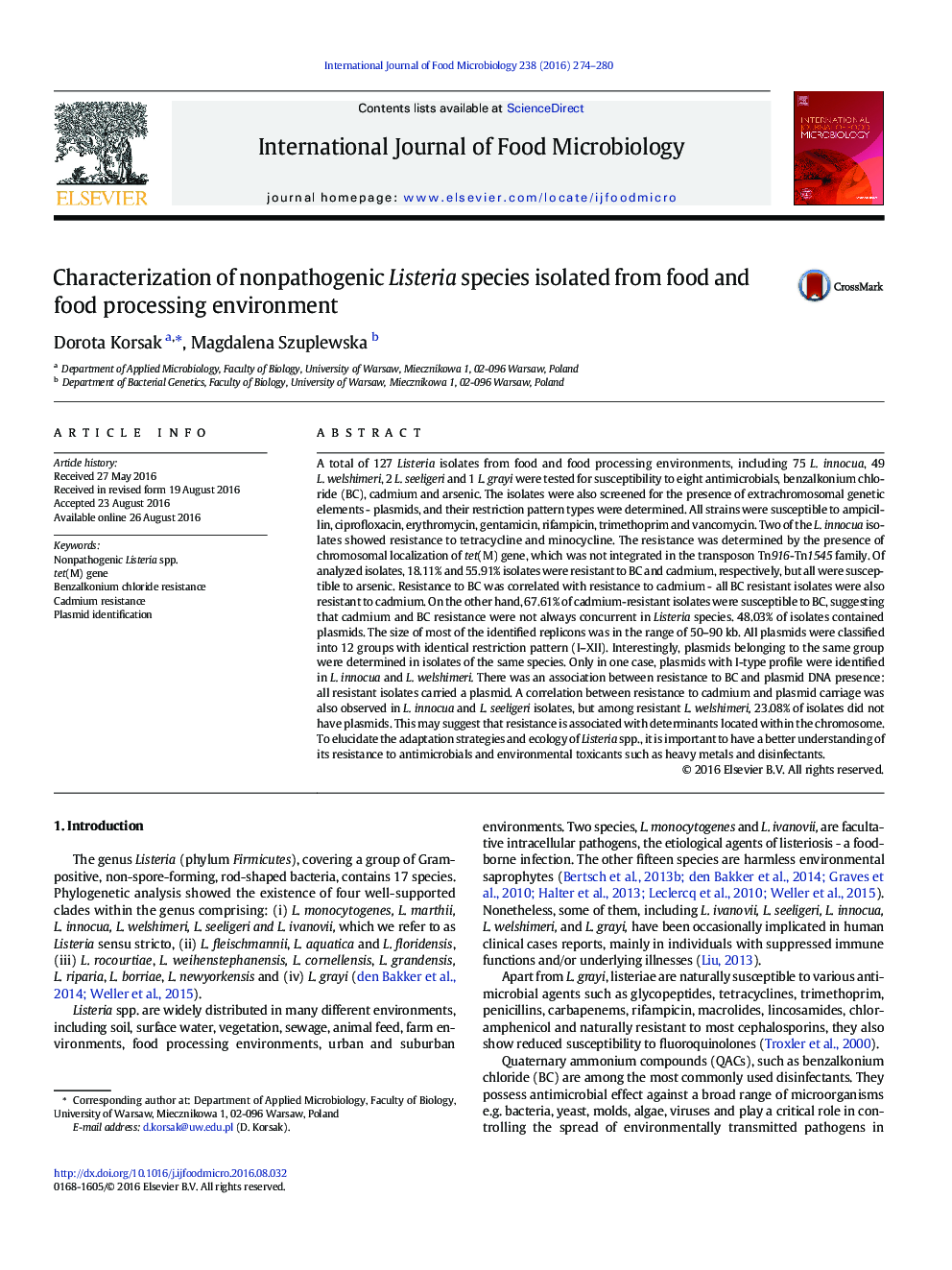| کد مقاله | کد نشریه | سال انتشار | مقاله انگلیسی | نسخه تمام متن |
|---|---|---|---|---|
| 4366143 | 1616545 | 2016 | 7 صفحه PDF | دانلود رایگان |
• Two from among 127 nonpathogenic Listeria isolates showed resistance to tetracycline and minocycline
• 18.11% isolates were resistant to benzalkonium chloride while 55.91% to cadmium
• All the isolates were susceptible to arsenic
• 12 different restriction patterns were identified among 61 isolates harboring plasmids
• There was an association between resistance to BC, cadmium and plasmid carriage
A total of 127 Listeria isolates from food and food processing environments, including 75 L. innocua, 49 L. welshimeri, 2 L. seeligeri and 1 L. grayi were tested for susceptibility to eight antimicrobials, benzalkonium chloride (BC), cadmium and arsenic. The isolates were also screened for the presence of extrachromosomal genetic elements - plasmids, and their restriction pattern types were determined. All strains were susceptible to ampicillin, ciprofloxacin, erythromycin, gentamicin, rifampicin, trimethoprim and vancomycin. Two of the L. innocua isolates showed resistance to tetracycline and minocycline. The resistance was determined by the presence of chromosomal localization of tet(M) gene, which was not integrated in the transposon Tn916-Tn1545 family. Of analyzed isolates, 18.11% and 55.91% isolates were resistant to BC and cadmium, respectively, but all were susceptible to arsenic. Resistance to BC was correlated with resistance to cadmium - all BC resistant isolates were also resistant to cadmium. On the other hand, 67.61% of cadmium-resistant isolates were susceptible to BC, suggesting that cadmium and BC resistance were not always concurrent in Listeria species. 48.03% of isolates contained plasmids. The size of most of the identified replicons was in the range of 50–90 kb. All plasmids were classified into 12 groups with identical restriction pattern (I–XII). Interestingly, plasmids belonging to the same group were determined in isolates of the same species. Only in one case, plasmids with I-type profile were identified in L. innocua and L. welshimeri. There was an association between resistance to BC and plasmid DNA presence: all resistant isolates carried a plasmid. A correlation between resistance to cadmium and plasmid carriage was also observed in L. innocua and L. seeligeri isolates, but among resistant L. welshimeri, 23.08% of isolates did not have plasmids. This may suggest that resistance is associated with determinants located within the chromosome.To elucidate the adaptation strategies and ecology of Listeria spp., it is important to have a better understanding of its resistance to antimicrobials and environmental toxicants such as heavy metals and disinfectants.
Journal: International Journal of Food Microbiology - Volume 238, 5 December 2016, Pages 274–280
